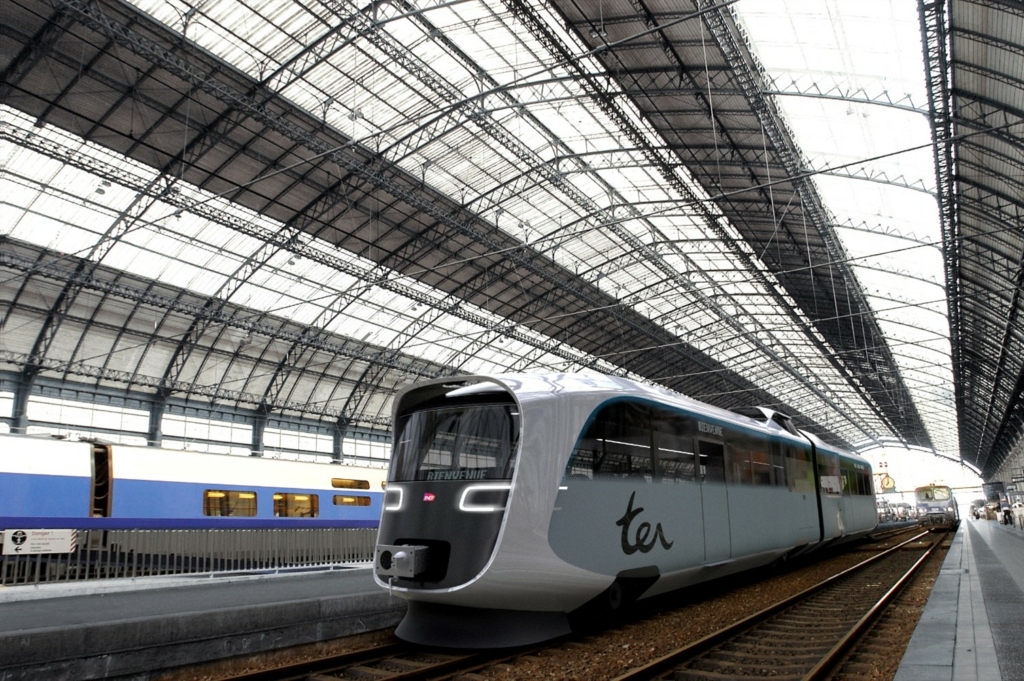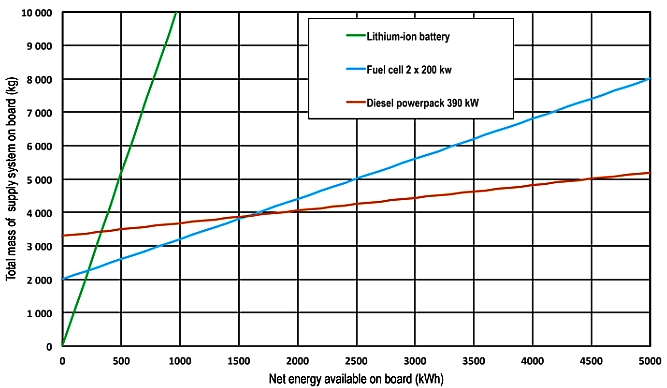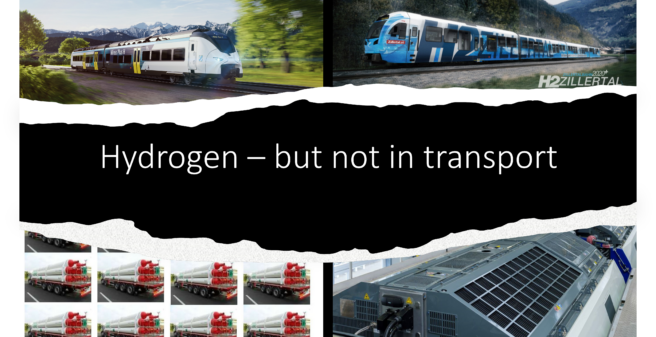
Two centuries ago, the industrial revolution began. It was made possible by coal as a source of energy and by the invention of the steam engine. Soon, petroleum was also produced in huge quantities and at the turn of the 20th century, diesel and petrol engines with internal combustion appeared for automobiles and later for trains. At that time, electric traction also began its triumphal procession, but by far not all lines could and can be electrified to this day. Thus, for the time being, the steam engine remained predominant in local and long-distance traffic and was later replaced by diesel mainly on regional railways in Europe.
Let us now play a mental game and assume that petroleum had initially only been found in very small quantities and thus dieselisation would not have taken place. Secondary lines would have continued to be operated with steam or battery railcars. But a completely different technology, especially where battery railcars would not provide sufficient power, another technology would certainly have seen a much faster development, namely the fuel cell. As early as 1800, the possibility of splitting water into oxygen and hydrogen by electrolysis had been discovered, and in 1838 the “gas battery” known today as the “fuel cell” was invented. However, this technology then lay dormant until around the middle of the 20th century, probably mainly because of the technical sticking points associated with it. It was not until the middle of the last century that it was brought out of oblivion again with the oil crisis and then further developed around the 1990s, when it was realised that oil would not gush forever and that it did cause serious health and environmental damage. Without oil, further development of fuel cells would probably have begun half a century or a whole century earlier, even if the fundamentally poor efficiency, which we will show and explain in the following, would probably not have been much better.
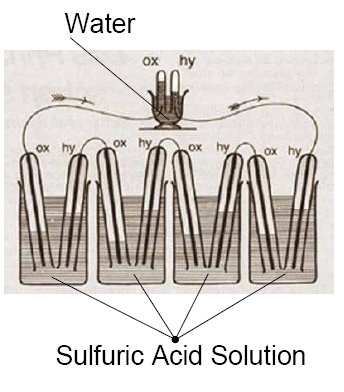
And now let’s imagine that at some point a few decades ago, huge quantities of oil had been discovered. What enthusiasm would have resulted from this, in a single lorry 12 times more energy than by hydrogen could have been transported, in cars suddenly only a small tank would have been sufficient instead of the huge pressure tanks. Now it would no longer be necessary to compress the very light hydrogen to pressures of several hundred bar, and the process of refuelling would no longer require any complicated and dangerous devices, simply filling it like water at atmospheric pressure would suffice. Finally, real progress, one would say.
But let us come to today’s situation and the hydrogen energy balance in urban and local transport. This consideration does not take into account the large quantities of hydrogen needed for cement and steel production and for other areas in the chemical and food industries.
Properties and efficiencies
Depending on the raw material and production method, a distinction is made between grey, blue and green hydrogen. Grey hydrogen is produced from natural gas and CO2 escapes into the atmosphere in the process. If the CO2 produced is transported away and stored underground, harmful methane can be produced and some of the CO2 escapes. Green hydrogen is produced from water with renewable electricity through electrolysis. The resulting oxygen goes into the air or can be partially used for industrial purposes. As a variant of this, electrolysis by non-renewably generated electricity is not considered. In the following, we will talk about green hydrogen produced by hydrolysis.
For electrolysis, with an energy content of 33 kWh/kg, an energy requirement in the order of 45 to 55 kWh/kg H2 is assumed. More electrical energy must therefore be expended than is ultimately generated as the calorific value or energy content of the hydrogen. This is confirmed by the various sources, which cite an energy efficiency in production of between 60 and 80 %. With an economically optimal design, fuel cells achieve about 66 %. Several German research institutions are conducting research on high-temperature electrolysis methods as part of the H2 Giga project, which has half a billion euros in funding. The goal is to set up industrial hydrogen production and achieve energy efficiency of close to 100 %. Experts doubt, however, that it would ever be possible to even come close to this ideal value.
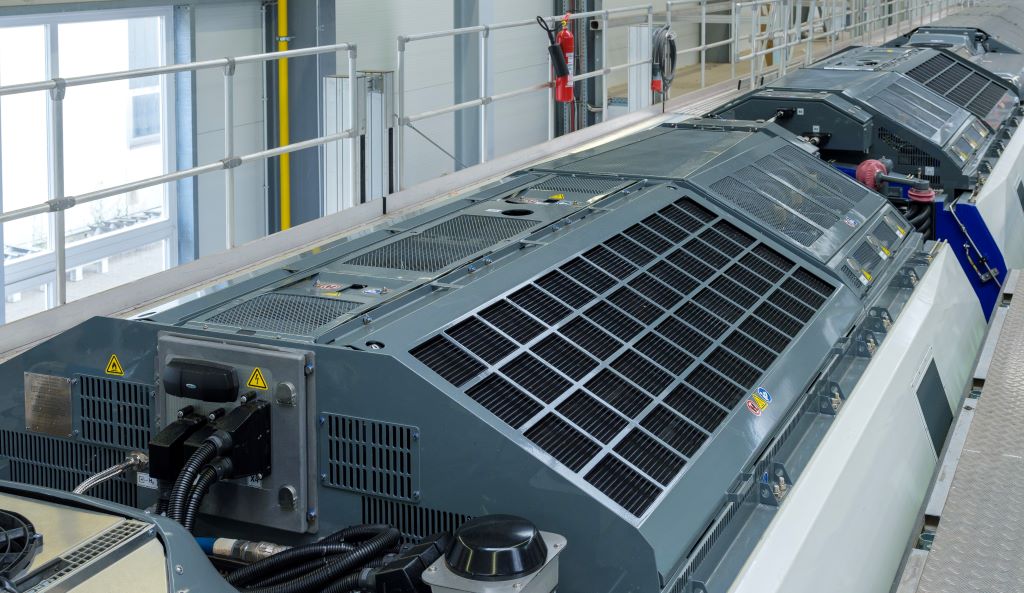
Energie chain
In terms of mass, hydrogen is much more energetic than fossil fuel by a factor of 3.3, but unfortunately the energy content per volume unit under atmospheric pressure is very low. Even in a liquid state, the energy density reaches only 31 % of the energy of the same volume of petrol. Liquid hydrogen also requires extremely low temperatures of -253 °C. Accordingly, the containers are more than three times as large and must be insulated against heating. On the other hand, hydrogen can be stored under very high pressures of 350 or even 700 bar. The weight and the large wall thicknesses of the pressurised gas containers as used in vehicles must then be taken into account.
Depending on assumptions and definitions, losses of 2 to 20 % are found in the literature for the transport of hydrogen, i.e. efficiency values between 80 and 98 %. For compression to 350 to 700 bar, values of 80 to 92 % are given and for refuelling 92 to 99 %. With these data, the total energy efficiency until the hydrogen is in the vehicle tank is a wide range between 40 and 60 %. For further considerations, an average total value of 50 % should be assumed here.
Fuel cells, which convert the energy content of the hydrogen back into electrical energy, have an efficiency of 50 to 60 % today and operate via a buffer battery to compensate for the changing energy requirements of the driving cycles. This means that in real operation, a practical efficiency at the lower limit, i.e. 50 %, must be assumed.
This means that of the electrical energy fed into the system, an energetic efficiency of at most a quarter, 25 %, remains on the vehicle over the entire chain from hydrogen production to use for traction and the rest! In addition, electric vehicles are expected to have around 15 % electrical and mechanical losses in the traction chain; in the end, power at the wheel hardly exceeds 20 %. Instead of using a fuel cell, the hydrogen could also be used via a combustion engine adapted for this purpose; such engines are under development. Apart from the noise generation, which of course does not exist with the fuel cell, such engines have an even lower efficiency of around 40 %, which would then further reduce the overall efficiency. In addition, they seem to emit nitrogen oxides and tend to knock like earlier petrol engines. For the future, slight improvements can probably be achieved through optimisations for both technical solutions. In any case, about four-fifths of the energy fed into the grid is lost.
Public transport vehicles
So how does this compare with trams, trolleybuses or battery buses? In the case of catenary-fed systems, the efficiency of the substations must first be taken into account; this lies in the range between 95 and 98 %i. If one assumes estimated losses of less than 10 % for the catenary, one can expect a total of about 90 % that is available to the vehicle. In the case of trains and trolleybuses, depending on the topography and mode of operation, up to 50 % of the traction energy can be fed back into the grid, which in the case of modern vehicles is less than 30 % of the energy absorbed, i.e. more than 10 %. This would bring the efficiency of the power supply to over 90 %, which would be comparable to the 25 % of energy available to a fuel cell vehicle at the input of the traction chain.
From the foregoing, it is clear that rail and road vehicles powered by hydrogen via fuel cells and, to a greater extent, hydrogen engines require about four times more primary electrical energy than vehicles powered directly by catenary or batteries, and this also applies to automobile cars. The same amount of primary electricity can power four battery-electric vehicles, but only one hydrogen and fuel cell-powered vehicle of the same size.

Now, all countries are struggling to provide enough renewable energy at all, and even if public transport needs very little energy, it does not seem sensible to simply waste it with expensive and uneconomical energy sources and withhold it from other uses. Representatives of well-known rail vehicle manufacturers and transport companies confirm this behind closed doors.
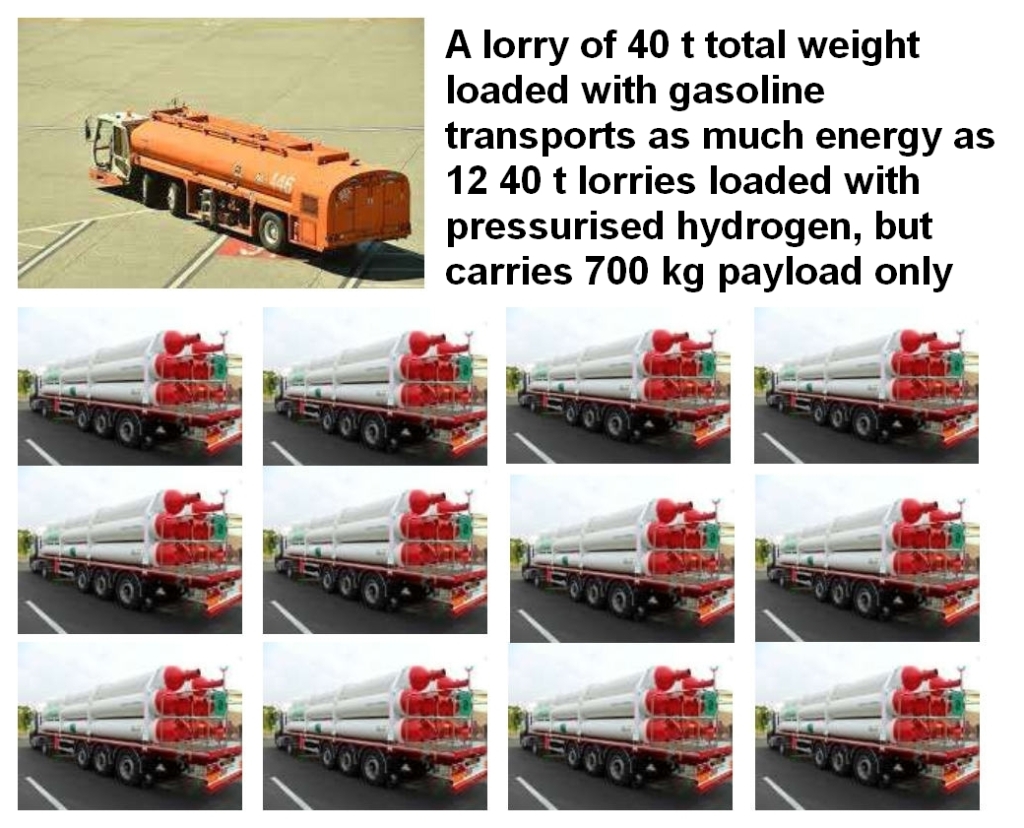
Incidentally, one would also have to think about producing the electricity and hydrogen in sunny countries, for example in the North African desert, and then transporting it to Europe. This requires 9 kg of fresh water per kg of H2 , salty seawater is not suitable because it would have to be desalinated in an energy-intensive process. In addition, the transport of hydrogen is very energy-intensive; beyond a distance of 4000 km, the required pump energy exceeds the energy content of the hydrogen. To transport the energy stored in a petrol tanker, 12 H2-pressure gas trucks are needed.
Projects
It was thought that it might be interesting to have ideal conditions for the application of this technology in such places where cheap renewable electricity is available at low cost during periods of low electricity demand, and thus cheap hydrogen can be produced directly on site, and at the same time a hydrogen-powered railway is also running. The Austrian Zillertal Railway had been pushing such a project for years, using cheap night-time electricity from the surrounding hydroelectric power plants. Although the latest studies indicate that electrification of the line would be cheaper than the estimated 130 million euros and, above all, much more energy-efficient, the Tyrolean government made a decision in principle in favour of the hydrogen railway on 19 June 2023. However, this was jeopardised again the very next day when the Tiroler Tagblatt revealed that a draft dissertation on the subject of hydrogen, which the technical director of the Zillertal Railway had submitted to the University of Innsbruck in 2019, had been destroyed for undisclosed reasons. Cause enough for speculation.
The decision-makers of the Hessische Landesbahn have probably succumbed to the propaganda of the hydrogen lobby and, with great enthusiasm for the Taunusbahn to neighbouring towns around Frankfurt am Main, have converted their entire fleet from the old diesel trains to new H2 trains at the turn of the year 2023. In the process, there were and still are major delivery problems on the part of the supplier and numerous teething problems with the technology, which practically paralysed all rail traffic for months. Only time will tell which effects can be attributed to the basic technology and which can be remedied over time.
The question already arises, however, as to how much it will cost to operate with hydrogen, which is to be obtained from outside and is also expected to be expensive in the long term.
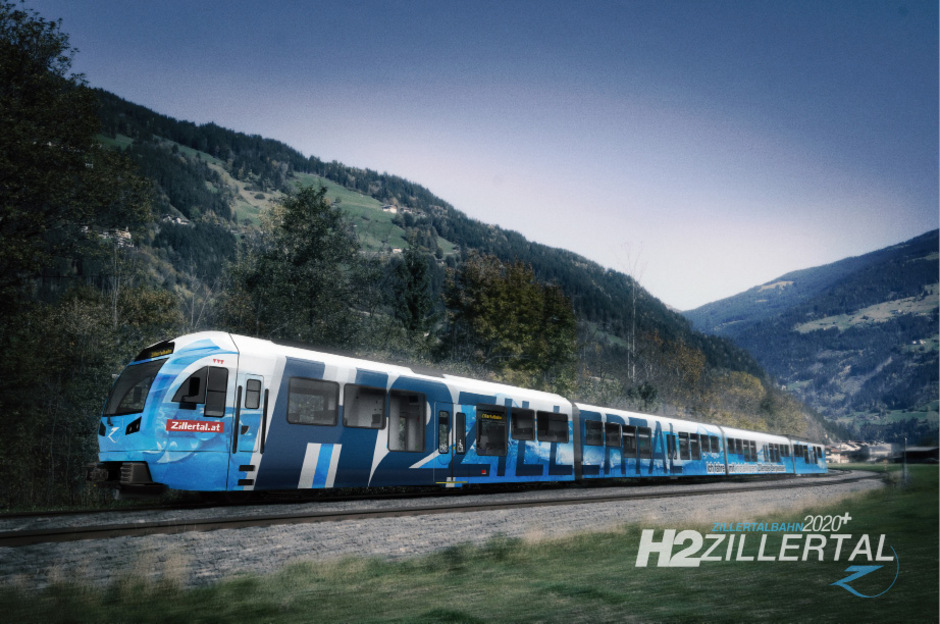
The German railway consultant Hans Leister (Zukunftswerkstatt Schienenverkehr) therefore thinks that battery-powered trains are usually the more elegant solution in Germany. Hydrogen trains are more inefficient, more expensive and, because of their long range, only attractive for countries where there are long routes without electric overhead wires. “But in Central Europe and also Germany, with its large share of electrified lines, I don’t see a greater need for such trains.” A study by the Baden-Württemberg Ministry of Transport came to a similar conclusion. The study examined 16 lines with a total length of more than 500 kilometres, on which diesel trains have been running up to now. Everywhere, battery-electric multiple units or pure electrification were more recommendable than hydrogen, according to the findings. Leister suspects that “because of its proximity to the state, the hydrogen lobby has discovered railway operations as an area where subsidies are readily paid for the establishment of a technology that certainly makes sense in many other areas, but does little for rail transport”.
It can be assumed that those responsible at the EU 2021 were not aware that the development of a fuel cell train – if at all – was a niche product when they funded a consortium led by the Spanish manufacturer CAF with 10 million euros for a retrofit of an existing three-car Civia local train with fuel cells and associated batteries through the EU project FCH2Rail. Nor is it understandable why other well-known manufacturers are also developing such trains.
In the field of urban buses, too, it is becoming apparent that hydrogen fuel cells are not the right choice after all. For example, Elektroauto-News reports that the city of Wiesbaden is phasing out its 10 hydrogen buses, which are only a year old, because the hydrogen filling station, which cost 2.3 million euros, is not working and the project, which was funded with more than 5 million euros, is being terminated. Hamburg operates hydrogen buses but does not order any more. In Montpellier it was realised that battery-electric buses are much cheaper than hydrogen buses and an order for 51 buses was cancelled. In Graz, 167 battery-electric and hydrogen-powered buses were to have replaced older vehicles, but the project is on hold until further notice.
This is also consistent with studies from the hard-calculating field of road transport. For example, Bernard Jacob, Engineer Général Honoraire at the Université Gustave Eiffel in Paris, calculates that the total costs over the life of a battery-powered lorry are 40 % higher than those of a diesel-powered one, and that for hydrogen the cost is 3 to 5 times higher!
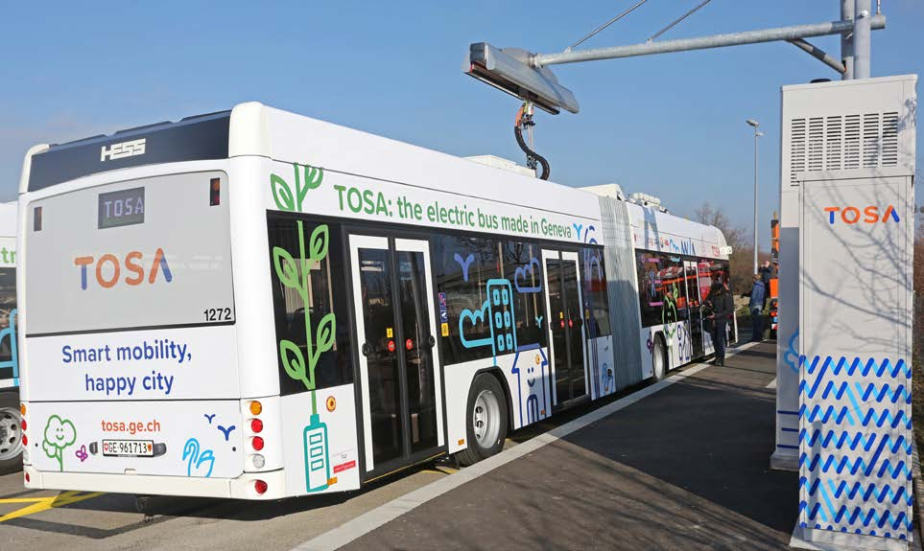
Conclusion
The Neue Zürcher Zeitung, known as pro-business, quotes climate policy expert Anthony Patt of ETH Zurich: “Patt fears that the energy transition could be delayed if hydrogen is used in areas where electrification would be more efficient. If the demand for green hydrogen increases faster than the supply, there is a danger that blue or even grey hydrogen will be used instead. This would not serve the energy transition. In a recent blog post, Patt accused the oil and gas industry of lobbying Brussels for a hydrogen infrastructure by any means necessary. The industry sees hydrogen as the last chance to save its business model into the post-fossil age.”
The Swiss Federal Office of Energy also says this in its report on energy prospects after 2050: “Electric vehicles with fuel cells are expensive and less efficient than battery-powered electric vehicles. This will remain the case in the future.”
All in all, this means that vehicles powered by fuel cells are anything but climate-friendly. It must be stated that they are diametrically opposed to the concerns of climate protection, or as the experienced energy expert Ulf Bossel puts it, hydrogen prevents the energy turnaround. More cautious is the economist Prof. Bernd Kortschak and development engineers of the French SNCF, who speak of hydrogen as a niche application.
Alternatives
Alternatives are available, and they must be carefully analysed and weighed against each other for each line and each mode of operation. As shown, it does not make sense for environmental reasons to operate entire lines, fleets or even networks with fuel cell vehicles. Hybrid vehicles and hybrid routes probably make more sense, and larger or smaller batteries are reasonably efficient storage devices. Longer lines, for which their energy is not sufficient, may perhaps be equipped with a catenary on critical sections, especially on longer gradients, or with fast-charging devices at stops. For others, and if the objective of transferring to public transport is also taken into account, electrification may be worthwhile. And why not rely on small diesel engines to recharge batteries in individual cases, similar to what has been the case for decades with trolleybuses to bridge short sections of track without overhead wires?
